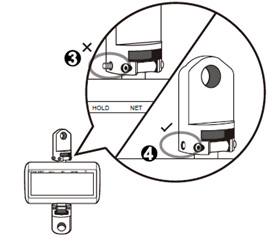Lift Scale Warning Letter
Information for Safety
MHS-series Lift Scales
Date: 11 September, 2021
This is a Warning Letter reminding users of the correct installation and operation procedure for Charder Lift Scales. Please contact us if you have any further questions!
Models affected: MHS2500I / MHS2510I / MHS2600I / MHS610I
Affected lot: MA11970001
Affected lot: MA11970001
Affected serial number: T19002505
Reason for safety notice
Charder received a report from medical equipment distributor informing us that a Charder Lift Scale (Lift Scale) broke down during use in a private nursing home in France. The Lift Scale was attached to a Patient Lifter.
According to the user's description of the incident, the Lift Scale's cardan joint was broken, and the Lift Scale was separated from the Patient Lifter. The joint was bent and not vertical, indicating possible improper installation:
No patient injury or death was reported as a result of the incident.
Probability of occurrence
If the Lift Scale is bent when installed, probability of eventual breakage is 100% inevitable once subjected to enough weight and used enough times due to inconsistent force being put against the connector in a way it wasn't designed to handle (bent), causing deformation and eventual failure.
Risk caused by incorrect installation/operation
The Lift Scale must be installed and operated in accordance with manufacturer's design principle, without twisting or obstruction from Patient Lift. Joints and connectors must be vertical, and can move freely at any time. Otherwise, if twisted, they will be weakened and will gradually break down and snap, as seen in this incident, potentially causing patient injury (falling from Lift System).
To ensure that joints will not break, operators must ensure that joints are not fixed in bent position. Ideally, joints must be allowed to move freely, so they will remain vertical regardless of the Patient Lift's position (ex: fully lowered or fully raised).
A. Lift Scale must NOT tilt at any time
B. Inspect cardan joints before use for signs of damage or looseness
C. Lift Scale should be installed on Patient Lift System that allows 360-degree free swivel
D. Screws must be screwed in tightly according to specifications
A. Lift Scale must NOT tilt at any time
1. Lift scale must NOT tilt when installed on Patient Lift System.
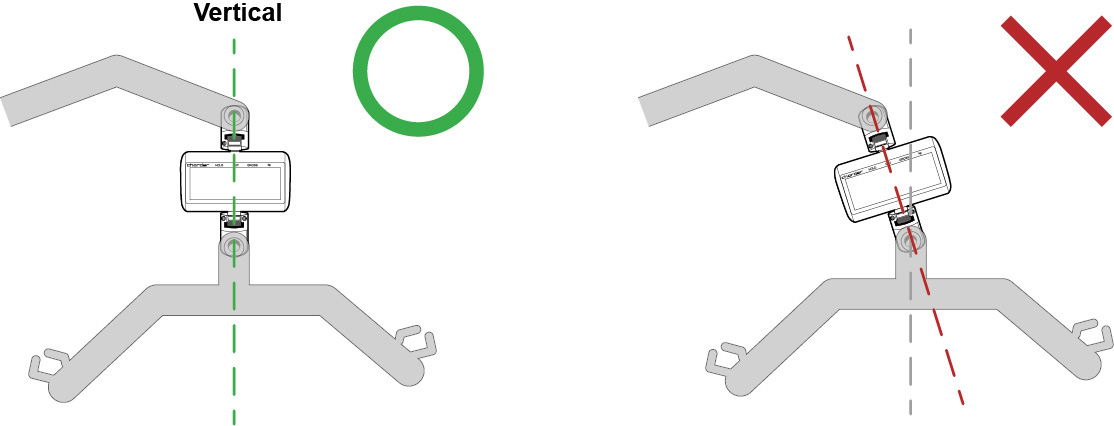
If Lift Scale is tilted and not completely vertical when installed, this will cause the joints of the Lift Scale to bend. This will eventually cause breakage once used enough times and subjected to enough weight, because force is being applied against joints in a way that they aren't designed to handle.
2. Lift Scale must NOT tilt at any time during Patient Lift System's operation.
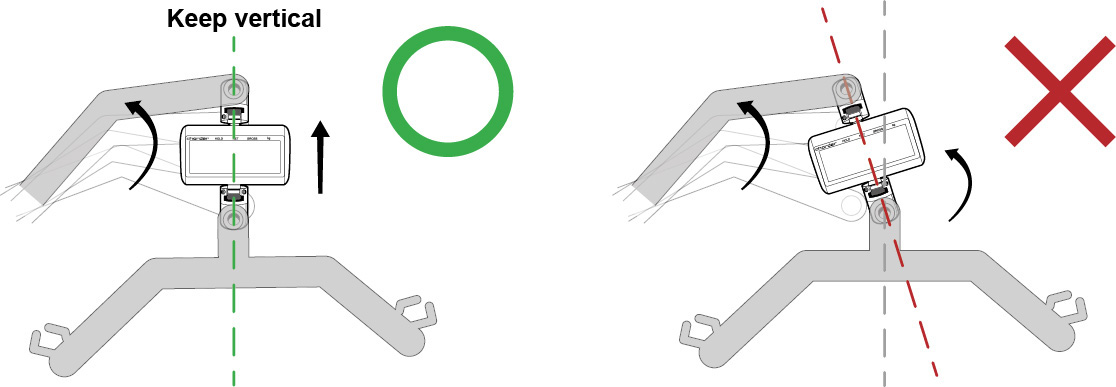
Even if Lift Scale is completely vertical when installed, if it is bent at any point in operation (ex: Patient Lift System raises patient to higher point for weight measurement), the same risk of breakage applies.
IMPORTANT: If tilt or bending is observed at any time, the Lift Scale must NOT be used.
B. Inspect cardan joints before use for signs of damage or looseness
1. Inspect cardan joints connecting Lift Scale to Patient Lift System visually before use.
The Lift Scale is designed to be installed between the lifting bar and hanger of the Patient Lift System, in a completely vertical position.
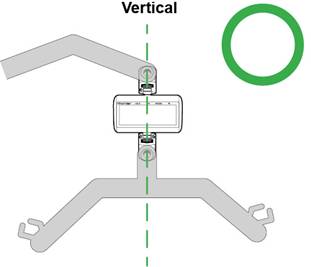
Both top and bottom cardan joints should be inspected for bending.
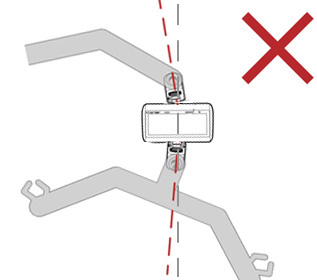
If any visual damage or bending is observed, do NOT use Lift Scale.
2. If no visual damage is observed, the Lift Scale should be twisted manually to test if incorrect movement is possible.
Charder Lift Scales should be installed on Patient Lift Systems utilizing 360-degree swivel bearings. Rotation should be conducted using Lift System, rather than device.
The cardan joints on MHS2500I / MHS2600I Lift Scales (with fixed cardan joints) do NOT swivel. If they can be manually twisted, that means the joints are damaged, and the Lift Scale should NOT be used.
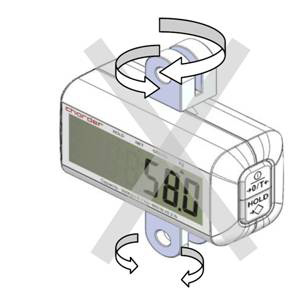
(MHS2500I / MHS2600I non-rotating cardan joint model)
The cardan joints on MHS2510I / MHS2610I Lift Scales (with rotating cardan joints) will swivel, but only horizontally. If they can be manually twisted in any other direction, that means joints are damaged, and the Lift Scale should NOT be used Scale.
3. Lift Scale and hanger bar must be allowed free movement in all directions.
If Lift Scale is obstructed from free movement, twisting force will be applied to Lift Scale, potentially causing damage.
C. Lift Scale should be installed on Patient Lift System that allows 360-degree free swivel
1. Rotation should be conducted by 360-degree free swivel Patient Lift System.
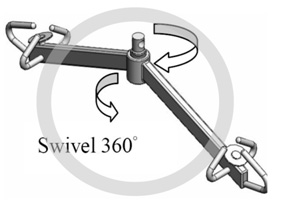
Even if the MHS2510I / MHS610I Lift Scales with horizontally-rotating cardan joints are used, rotation should be conducted by the Patient Lift System, and not the Lift Scale, to minimize risk of damage to Lift Scale.
D. Nylock Screws must be screwed in tightly according to specifications
Nylock Screws must be secured according to correct assembling procedure. Prepare one hexagon screwdriver and one torque wrench.
1. Hold/fix one side using screwdriver
2. Tighten/attach Nylock Screws using torque wrench (repeat from other side)
IMPORTANT: Torque strength must be set at 18kgf-cm ± 1kgf-cm
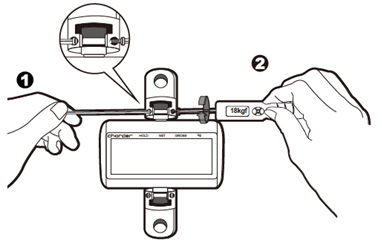
IMPORTANT: Nylock Screw must be secured from both sides (one side with screwdriver, other side by torque wrench). Nylock Screw will not tighten, and will simply rotate in place is counter-force from other side is not applied.
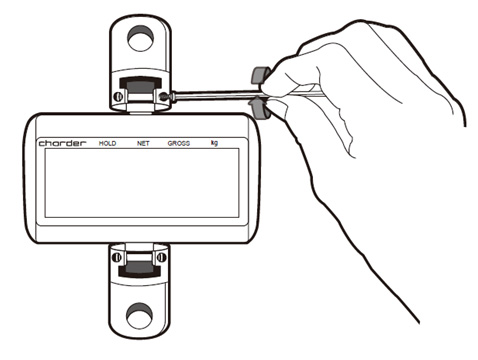 (do NOT secure from one side only)
(do NOT secure from one side only)Repeat for bottom joint. Check to ensure Nylock Screws are fully tightened.
3. Do NOT use the Lift Scale if Nylock Screws are loose.
4. Nylock Screws must be fully screwed-in.
